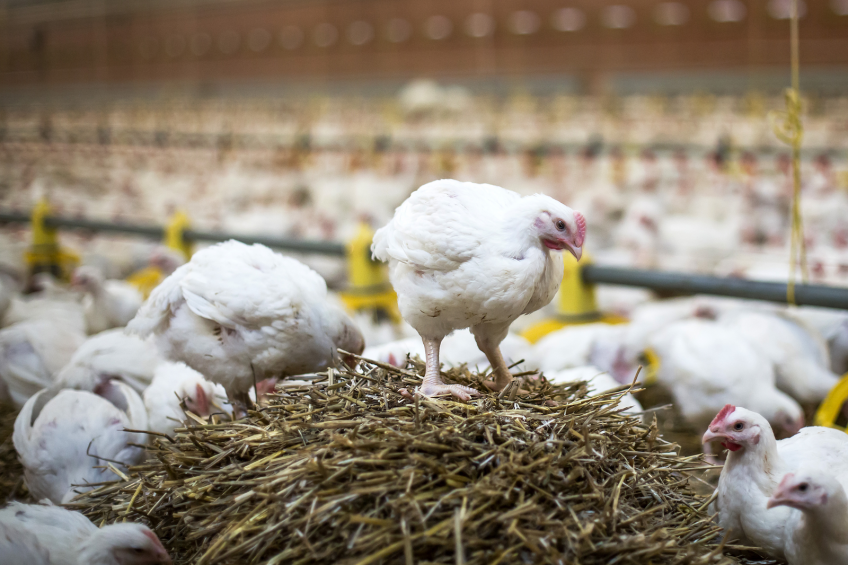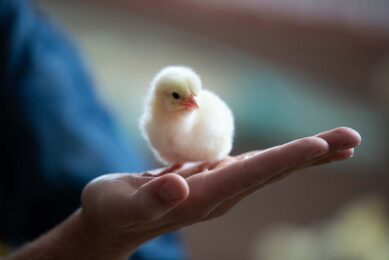The ins and outs of necrotic enteritis

The costly intestinal disease, necrotic enteritis (NE), has severe consequences for gut health. Recently, NE has re-emerged as one of the most serious diseases of commercial poultry, prompting producers to ?consider whether there is more they could be doing to maximise their flock’s productivity.
The gastrointestinal tract of commercial poultry is constantly exposed to a wide variety of potentially harmful factors which can have a detrimental impact on flock health and productivity. Poultry production is becoming ever more challenging. The drive to reduce antibiotic usage has intensified. Maintaining gut health will therefore become increasingly important for farmers when it comes to securing a competitive advantage.
Bad news for farmers’ bottom line
Necrotic enteritis (NE) is a potentially devastating intestinal disease of broilers, layers and turkeys caused by the toxin-producing bacteria, Clostridium perfringens (C. perfringens). The bacteria are classified into five types (A–E), based on the production of different toxins. Type A isolates, and occasionally type C, are most often associated with NE and their toxins are able to destroy the intestinal lining. This allows the toxins to enter the bird’s bloodstream and damage other organs, such as the liver. Ingestion of virulent strains of the bacteria from the environment, especially from faecal content, is thought to be the most common route of infection.
Although birds from between two weeks and six months of age can be affected, likelihood of disease depends on the type of bird and rearing conditions. For example, broilers raised on litter will typically be affected between two and five weeks of age, whereas layers raised on floor pen systems are often affected between three and six months of age.
Infection can either result in acute, clinical disease or manifest as a more chronic, subclinical problem. In acute disease, typically there is a sudden increase in flock mortality, often without warning, with up to one percent of the flock dying per day. Although most commonly described in relation to broilers, the consequences of NE are just as severe for layers, where sudden death can occur with, or without, a noticeable drop in egg production. Other signs include those common to most intestinal diseases including depression, dehydration, anorexia, diarrhoea and ruffled feathers. The signs are usually short-lived, as birds tend to die quickly.
The flock history, along with post-mortem examination and microscopic examination of gut contents, is usually sufficient to make a diagnosis. On post-mortem inspection of the small intestine, the inner lining of the gastrointestinal tract is usually dead (necrotic), signs of coccidiosis may be present and a brown, foul-smelling fluid may be found.
It is the chronic, subclinical form that often goes undetected, causing large reductions in growth and feed conversion rates, and is therefore the largest cause of economic loss. In addition, liver condemnations at the processing plant are also not uncommon with the chronic, subclinical form of the disease. With such far-reaching effects, it’s perhaps not surprising that NE is thought to cost the industry around $ 2 billion globally.
Gut health – the key ingredient
C. perfringens occurs naturally in the gastrointestinal tract of chickens and is ubiquitous in the environment, being present in soil, litter, water and feed. Colonisation of the gastrointestinal tract is thought to occur as early as the day of hatch. In robust, healthy chickens the bacteria can be present in the birds’ intestines without causing any harm. So why does the bacteria cause disease in some birds and not others?
Even a minor compromise in gut health can be enough to allow the bacteria to multiply and start to produce harmful toxins. The gut’s structure – particularly the integrity of the lining of the gut – as well as its microflora and its immune system are vital to intestinal health. Factors which can upset the balance of these elements and are associated with the development of NE include dietary factors, immune status and stress, general management and the presence of other diseases such as coccidiosis. It’s clear that there is no single solution to preventing NE but that maintaining good gut health must be a priority. This requires farmers, nutritionists and veterinarians to collaborate to make sure birds remain disease-free and perform at their best.
Intestinal health from the inside-out
As the gastrointestinal tract is extremely susceptible to dietary composition, it is logical that this should be high on the list of factors to address when looking to maximise gut health. Ultimately this can help to increase productivity and reduce susceptibility to diseases such as NE.
For many years, the use of antibiotic growth promoters kept NE levels under control but with the phasing out of antimicrobials, focus has shifted to alternative ways to achieve these goals. The opportunities presented by in-feed short chain fatty acids (SCFAs) in this regard are becoming more widely recognized. Supplemental SCFAs have been shown to positively affect a number of the vital structural and functional aspects of gut health, as well as providing an additional source of energy.
Of the SCFAs, butyric acid is of primary importance when it comes to gut health with butyrins being one of the most effective forms of this product available.
Butyric acid – a multitude of actions
Supplementation with butyric acid in poultry has been shown to have many benefits such as optimisation of the profile of intestinal microbiota and intestinal pH, direct antimicrobial properties, support of tissue development and repair, improved integrity of the cells of the gut lining and boosting of the gut’s defence systems.
These are all key players in preventing a C. perfringens infection from establishing. Improvements in feed conversion rates and weight gain with butyrate supplementation are likely to be a result of improvements in nutrient digestibility and mineral absorption, as well as increases in intestinal surface area and subsequent absorptive capacity of the gut.
The complete picture
As well as using additives such as butyrate to promote gut health and strengthen the barriers against intestinal disease, avoiding certain dietary components, which are thought to favour C. perfringens’ growth, may also be useful in decreasing NE incidence. These include ingredients such as fishmeal, oats, barley, and rye; excess amounts of which are thought to be used by Clostridial bacteria for growth and toxin production.
Other factors that can impact on gut health and increase the likelihood of NE include stress and concurrent disease. Both of these are likely to impact on the microbial balance and defence systems of the gut.
Environmental factors such as hot or cold temperatures and any changes in feed, litter conditions, stocking density or vaccination programs may be a source of stress and have been shown to cause immunosuppression, predisposing birds to disease. Maximising general hygiene and biosecurity can help prevent NE although such procedures will not be effective on their own.
Coccidiosis is one of the most extensively studied predisposing factors for NE. Like C. perfringens, the coccidian protozoa are present everywhere in the surroundings and can proliferate and cause disease if gut health is compromised. Coccidia can damage the gut lining making it easier for a C. perfringens infection to be established.
Preventative measures which exert positive effects on gut health can have a multitude of benefits in reducing NE incidence and other intestinal diseases as well as generally improving the health and performance of poultry. As the industry faces increasing challenges, these factors become even more important for producers striving to optimise production.
References available upon request
Join 31,000+ subscribers
Subscribe to our newsletter to stay updated about all the need-to-know content in the poultry sector, three times a week. Beheer
Beheer








 WP Admin
WP Admin  Bewerk bericht
Bewerk bericht